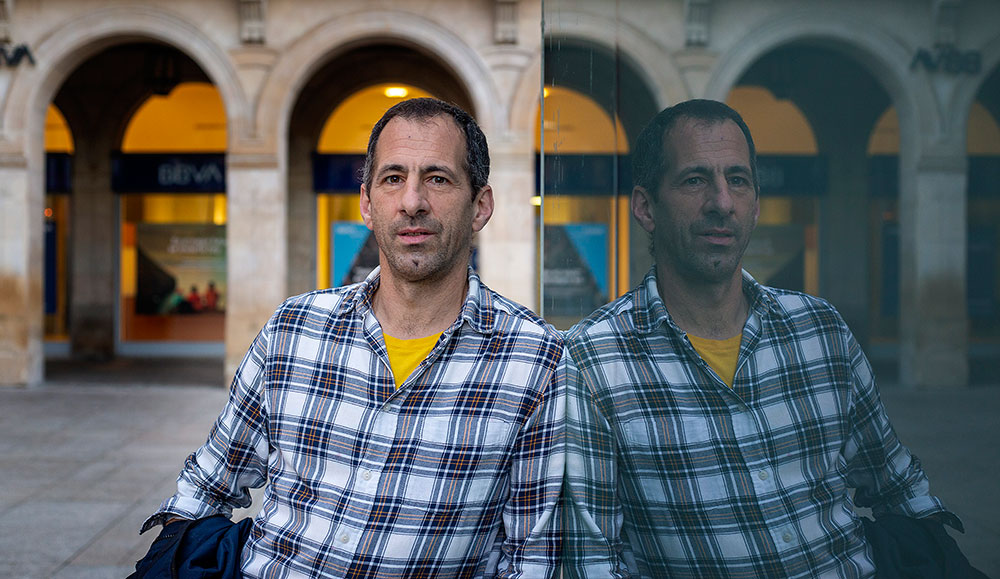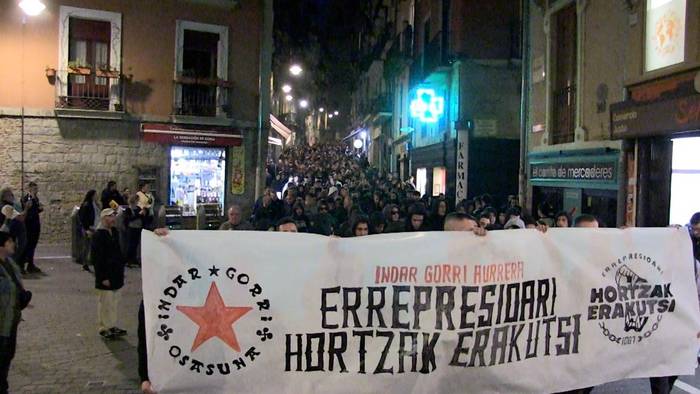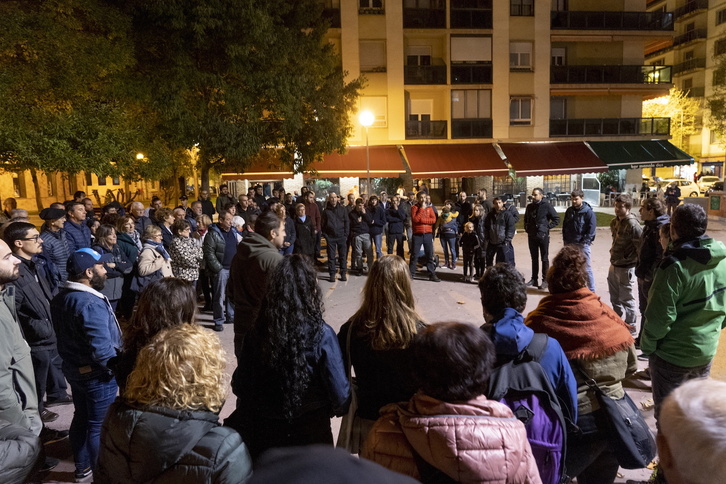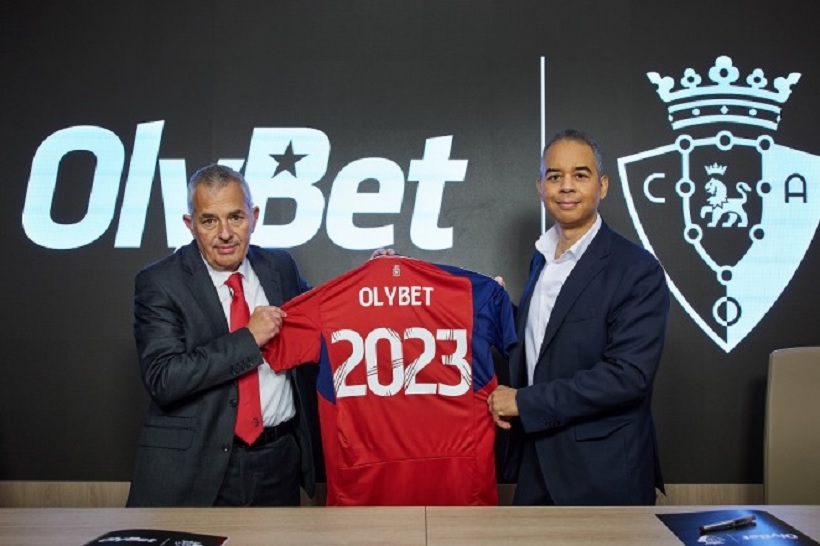"It's absurd to say that you don't have to confuse football with politics."
- Just after the centenary of Osasuna, Mikel Huarte wanted to recall the humble, vascophilous and progressive origin of the club, Rojas, published by Txalaparta. Football, politics and repression in Osasuna (Rosados. Football, politics and repression in Osasuna). He focused on the team members who suffered the repression in 1936, but also collected other passages and anecdotes from the club's social history.

It is a hundred years since the creation of Osasuna in 1920. But before, there was also football in Pamplona.
According to Dr. Simon Blasco, in 1900 a certain Enparan, who studied at the Huarte school in Pamplona, taught his colleagues to play football. It was an upper-middle class school, the first secular and liberal school in Pamplona. We, in the archives, have confirmed the presence of a student named Ignacio Enparan at that time. He is said to have studied in Wales before coming here. Later, in 1904 there was the first mention of football in the Diario de Navarra, when reference was made to some of those who played in the bullring.
Why was Osasuna imposed on various teams?
Between 1900 and 1920, until the creation of Osasuna, there were a lot of teams in Pamplona. In general, they were groups of friends, and it's hard to know what the social or political trend of each gang was. Sportiva was born in 1919 and renamed Osasuna in 1920. The Osasuna was created with the intention of playing outside the house, with the objective of joining forces. And in the end, of all those who were there, it is Osasuna who has turned a hundred years old.
Among the founders were Basque and Communist nationalists. This contrasts with the image subsequently transmitted by Osasuna.
We know that the first two presidents of the Sportiva were Communists, but we don't know if they were in 1920. In 1920, those who played in Osasuna were young men, with studies, but they would have the influence of the Russian Revolution of 1917, such as the First World War, the Spanish flu or the War of Morocco. What's clear is that at the dawn of Osasuna there's a vascophilous component, and there's also a lot of people with progressive and republican ideology. But there were also Carlists and Beatles. It was a plural, liberal trend group.

When and how did that change?
In the Republican era, Osasuna’s leadership was clearly republican and left-wing. But at the same time, there were others like Antonio Lizarza, who joined Mussolini. Pamplona was the zero area of the coup, in which eight people directly related to Osasuna died: six shot, one in a bombing and one in prison. It has always been mentioned in the history of Osasuna that four people died for GOD and for the homeland, and now we know that at least eight people died on the other side. They weren't killed because they were from Osasuna, but they were from Osasuna. The club wasn't a red nest, but it was a red nest. That disappeared with the war.
So he began to project Osasuna's conservative, regionalist image. Has it been extended to this day?
From Antonio Lizarza to Patxi Izco, all the presidents of Osasuna have been men of the regime and have been replaced by their colleagues. The left has never taken power, football has been a means of business. Here, most of the presidents came from the savings banks, and we already know who controlled that in Navarre. In fact, the club belongs to the members, but the management is the one that has the members under their dependence and does not come out of the script.
Why did they drive that image?
Because football, from emotion and passion, generates very strong identities. That is why it is absurd to say that football should not be confused with politics. They can talk about politics, but when you talk from a critical point of view, they accuse you of confusing football and politics. Why have the murders of these republicans not come to light? It is precisely because of this silence. On the one hand, the trauma of those who experienced the repression and the silence imposed on them. On the other hand, that generation dies and the authorities say that we only have to talk about football. Now, on the thread of the centenary, it had to be told.
Do you see signs of change in the club today?
Javier Miranda was the only one who brought the change with him, and the next ones, Patxi Izko, Miguel Artxanko and Luis Sabsubiko, have confined themselves to maintaining that minimum. But the regime has always controlled the club. If something changes, it's because of the pressure of the partners. It's true, now the club does more in Euskera, but well, what less, no? What I know is that there's a Memory Law that Osasuna doesn't comply with. Well, he is not obliged to do so, OK, but the Navarre Parliament would support the institutional tribute to the victims of Osasuna, and the club escapes him.
You said that you have reconciled with Osasuna thanks to the book. Why?
I have always been a lover of Health, since I first went to El Sadar. But I already knew that there is a generation, my predecessor, who cannot even see football, because, in particular, he connects Osasuna with the Navarre right. When you realize that before the war it wasn't like that, of course you reconcile. I have a complex. Pamplona was the zero zone of the coup, there was a popular revolt against the republic. The Republicans on the left were a minority, but, well, there are a lot of nice stories that you don't know. So, of course, I have reconciled myself with Osasuna and my city.
“I’m just curious. I studied sociology, but that's a long way away, although I have some of the method left. I, above all, was curious, fed by Félix Monreal. He himself began to bring this to light, especially the cases of Eladio Zilbeti and Natalio Ciyuela [the Osasuna shooting founders both]. I thought, What if there were more? So I started researching, asking the people who know the most and with a thousand doors ahead. It is true that research has something addictive. Then came the Txalaparta to propose the book to me; I didn’t want to publish any books, it gave me a swing, but there was a need to tell all this.”
























